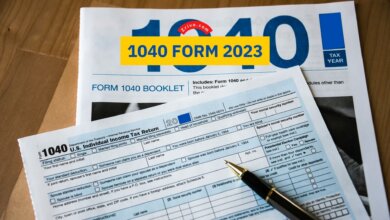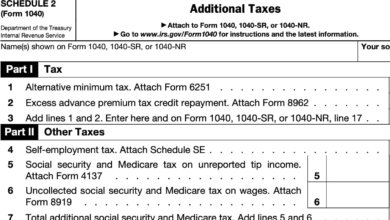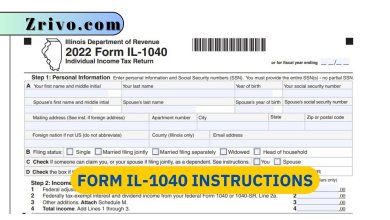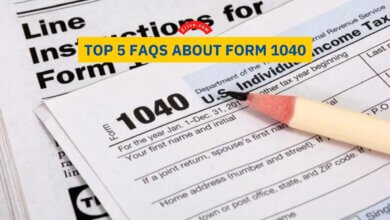1040 Tax Form Instructions 2023 - 2024
Filling out the Form 1040, also known as the U.S. Individual Income Tax Return, might seem complex, but breaking it down into step-by-step instructions can make the process manageable. This guide will walk you through each section of the form, highlighting key points and providing insights for accurate completion.
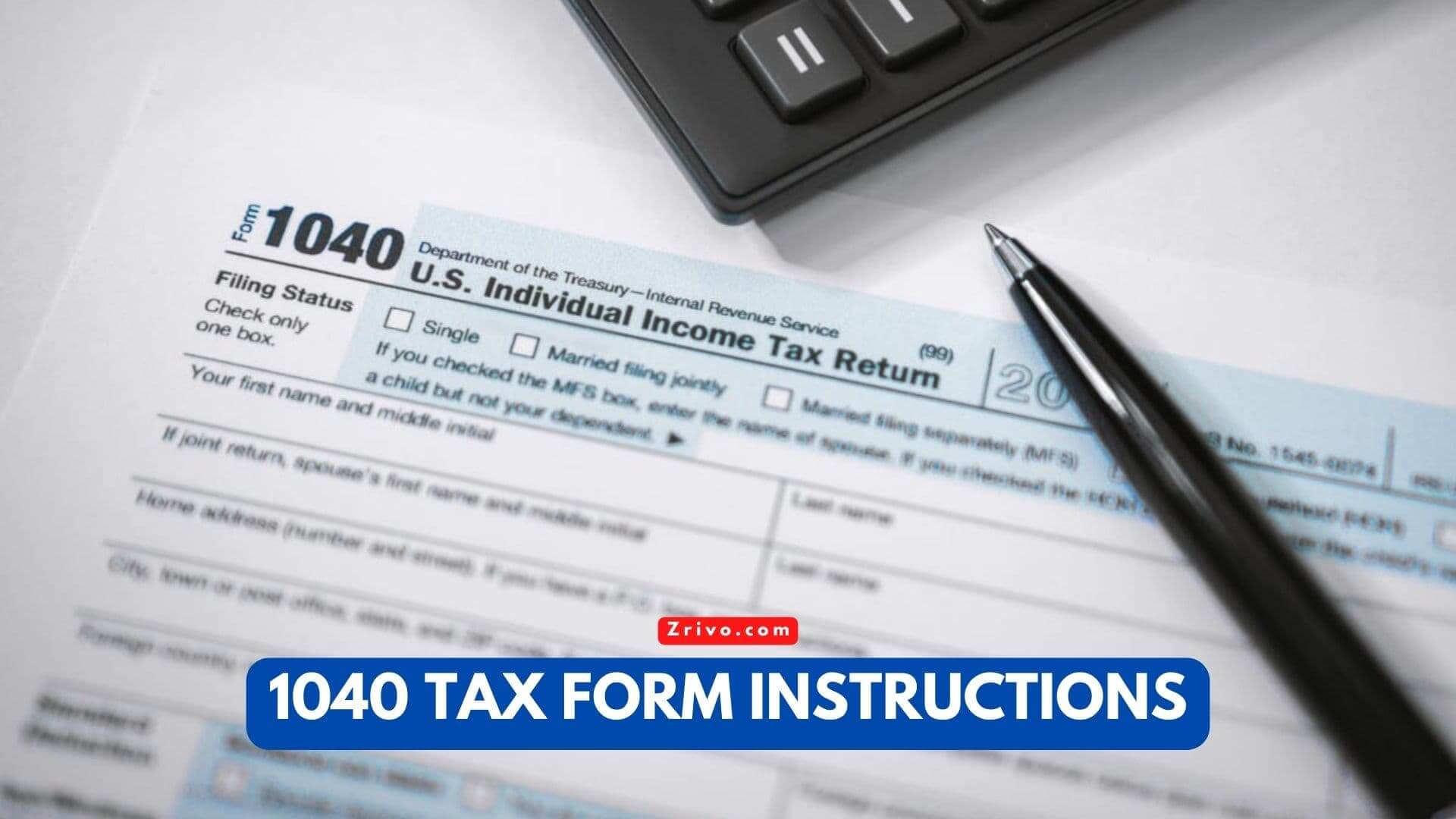
Contents
The IRS Form 1040 is one of the forms that help taxpayers to file their individual income tax returns throughout the tax year. Although it may seem like a pretty simple form, it can be quite challenging to fill it out. Additionally, any mistake you are going to make on this form can result in penalties or interest.
If you would like to learn more about the IRS 1040 tax form, then the following instructions can be useful for many. As you can fill out it forms on your own and file them, you can always seek assistance from a tax professional as well. In this way, you can ensure a smooth and problem-free filing process.
What Do You Need to File 1040 Tax Form?
As we previously noted, you need to file a 1040 tax form to determine your taxable income. As a result, your tax will be calculated over this balance. First, you need to calculate your adjusted gross income and then calculate the deductibles to avoid overpaying your tax.
Your expenses such as medical expenses, charitable contributions, state and local income taxes or sales taxes, and mortgage interests are some of the deductible incomes that you can calculate with the help of this form. In other words, this form lets you save money by cutting your taxes that are already calculated in different ways. Therefore, working with a professional may be a good idea to save money in the long run.

What Are Different Types of 1040 Tax Form?
Okay, now you know what is tax form 1040 and you may get ready to fill it out. However, after a brief research, you will find four different 1040 tax forms. These forms serve the same purpose, but each has different requirements. Here are the details:
Form 1040: This is the regular form that most taxpayers need to fill out. Thus, they can report their individual income for a specific tax year, and they can receive a tax refund or pay the additional tax they owe to the government.
Form 1040-SR: This is not different than Form 1040. The only difference is this form is designed for taxpayers who are older than 65 years old.
Form 1040-NR: This version is a bit longer than the regular forms and it is intended for non-resident aliens in the United States.
Form 1040-X: You may need to file this form after you file the regular 1040 form and need to make any amendments to your tax returns.
What Are Form 1040 Schedules?
You do not have to fill out every schedule you are going to find on the form. Most taxpayers need to fill one or two of the following schedules. However, besides these, there are also additional sections that you need to fill out before you send your form to the IRS.
Schedule 1: If you have additional income such as gambling winnings unemployment compensation, or deductions such as self-employment tax or student loan interest deduction, you need to fill out Schedule 1.
Schedule 2: If you owe taxes such as household employment taxes or qualified retirement plans or you need to report excess advance premium tax credit repayment, you need to fill out Schedule 2.
Schedule 3: If you have other credits that you need to claim such as general business credit or foreign tax credit, or you have other payments such as excess social security tax withheld, then you need to fill out Schedule 3.
It’s tax season again, and it’s time to fill out your 1040 Tax Form. But you should know that this year, there are a few extra details you’ll need to know about. For instance, you’ll have to calculate the withholdings for your current income, but you’ll also have to calculate your adjusted gross income. This will help you figure out how much you owe in back taxes.
Calculate your adjusted gross income
Adjusted gross income is an essential component of your taxes. It helps you decide how much of your taxes you owe and what tax credits and deductions you qualify for. The IRS uses several different ways to calculate income. Understanding the calculation can help you get the most out of your tax return.
Gross income refers to your income, including wages, tips, business income, rental income, and dividends. Other things included in your total income are tips, interest on savings accounts, and gambling winnings.
When calculating adjusted gross income, you subtract certain expenses from your total income. Some common examples include contributions to health savings accounts, alimony payments, and interest on student loans.
When calculating your AGI, you may want to use a calculator. If you do not have access to a calculator, you can use a software program to do it for you. These programs will give you the correct information and guide you through filing.
Your taxable income is calculated from your AGI minus the standard deduction. This is the most common method of determining your tax liability. The standard deduction will vary depending on your filing status and the amount of income you earn.
Another method is to use the modified adjusted gross income, or MAGI. This is a slightly different AGI version used to determine your eligibility for certain tax benefits.
For example, you can deduct certain qualified medical expenses if they exceed a certain percentage of your AGI. Other deductions you can claim when calculating your AGI are contributions to a 401(k) retirement plan and educator expenses.
There are many factors to consider when calculating your adjusted gross income, so consult with a CPA to ensure you know your options. Knowing your adjusted gross income can be beneficial beyond the tax season. In addition, understanding how to calculate AGI can help you save money on your taxes.
Many states use the federal AGI to calculate their state income taxes. You can also find several free DIY tax calculators online.
Report withholdings
Many individual taxpayers use the standard Form 1040 to report withholdings. This form calculates taxable income, tax credits, and a taxpayer’s liability. It also includes information about payment amounts, including the standard deduction. Using this form, a taxpayer can estimate taxes on dividends and interest.
The 1040 tax form is one of many ways to report withholdings. Other forms, such as Forms 1040-SR, 1040-X, and Form 1040-NR, can help you estimate the amount of tax you owe. You can also use the IRS’s Withholding Estimator to calculate your tax liability. You’ll need the most recent pay stubs and your prior year’s tax return to use the estimate.
Taxpayers can file amended returns to correct any errors on their tax returns. However, they must use the appropriate form for the quarter being amended. If you still need to get all the information you need to file an amended return, you may need to contact GDOL for assistance.
Before filing your federal return, you should check the total amount of withholdings you have received. You can learn more about the withholding process on the Pay for Personal Services Performed website. Changing your withholdings requires knowing your adjusted gross income. Changes in the tax law could affect your withholding.
Individuals who are not required to withhold or have a low taxable income may not need to report payments. For this reason, they may not need to fill out Form 1040.
Business owners or independent contractors typically need to use Schedules C, E, and H. These schedules can be used to report business profit and income and the additional tax on retirement plans and IRAs. Self-employment taxes, childcare expenses, and residential energy credits can also be reported.
Employers who have more than ten employees must use one of two methods to report their withholdings. They can either submit paper statements to the Department or file electronically. If you have questions, contact the Accounting Services Tax Compliance Office.
Payments that are made over $5,000 are required to be filed electronically. If the due date falls on a weekend, the amount is due the following business day.
Calculate your tax on that income
If you’re looking to make your tax return the best it can be, you’ll use this page to figure out how to calculate your tax on that income. Here, you’ll find tips, tricks, and valuable suggestions. The good news is that this is all available to you right in the comfort of your home!
First, you’ll need to know what types of taxes you owe and where to find the information. In this guide, we’ll focus on how to find out where you stand in the state of New York. We’ll also look at the requisite tax forms. Once you’ve found out what you owe, you can start on your income tax return.
The next step is to take a close look at your deductions. You may have to pay state and local sales and property taxes. This can be done by filing Form ST-140, a nifty tax form allowing you to tally your totals. It is also possible to pay the tax outright, so ask questions before you sign on the dotted line.
Finally, you’ll need to understand the tax process, which involves using an IRS-approved form to tally your totals. This will allow you to calculate your tax on that income promptly and accurately. Lastly, you’ll need to follow the instructions for the letter. After all, if you do, your returns may be accepted!
While you’re at it, you should consider using a free online tax filing service to make your tax returns less arduous. Some services even offer fillable forms in a PDF format, which is perfect for those who prefer to do their tax filing in the comfort of their home. Aside from the usual suspects, these services offer you all the tax forms you need, including state and local sales, property, and self-employment taxes. There are many advantages to having this kind of service, especially if you’re a small business owner.
Overall, calculating your tax on that income isn’t hard as long as you follow the instructions in your fillable forms.
Calculate how much you owe in back taxes
If you still need to file your taxes and have some back taxes to pay, there are several ways to calculate how much you owe. You can use the tax forms for the previous year, get copies of your old returns from an accountant, or order duplicate copies from the IRS. Eventually, you’ll need to contact the IRS to create a payment plan. These steps will help you avoid more severe collection actions. However, if you want to wait to get the IRS, you can calculate how much you owe without ever having to speak with the government.
Calculate how much you owe by completing the Form 1040 tax return. This will help you determine how much tax you owe and whether you qualify for a refund. Depending on your income, you can either use the form to determine how much you owe or use a portion of your tax refund to pay the balance. Then, you can mail your check or use a Form 1040-V payment voucher to make your payment. Remember to write the four-digit tax year on the memo line.
If you are self-employed and expect to owe more than $1,000, you may be required to file quarterly estimated taxes. In addition, you can apply any overpayment you made this year to your next year’s tax debt. Also, if you cannot pay your current tax bill using your checking account, you can pay the balance with a credit or debit card. Make sure to get rid of the balance quickly to avoid interest charges.
Calculating how much you owe using the 1040 Tax Form Instructions is easy. Make sure to abide by the terms of your agreement with the IRS. Once you’ve worked out a payment plan, make the payments on time. Otherwise, you’ll accrue interest on the remaining balance each month. By following these steps, you’ll be well on your way to getting your finances in order. Remember to pay attention to your state’s income tax requirements, as some states require you to include sales and property taxes in your calculation.
Instructions for Form 1040 Step-by-step
Step 1: Personal Information
Provide your personal details, including your name, Social Security Number (SSN), address, and filing status. Ensure this information is accurate and up-to-date.
Step 2: Reporting Income
In this section, you’ll report various types of income you received during the tax year, including but not limited to:
- Wages and salaries (Form W-2)
- Self-employment income (Form 1099-NEC)
- Dividends and interest (Form 1099-DIV and 1099-INT)
- Rental income
- Capital gains or losses
Step 3: Deductions
List eligible deductions to lower your taxable income. These may include:
- Standard deduction or itemized deductions
- Student loan interest
- Medical and dental expenses
- Charitable contributions
Step 4: Tax Credits
Claim tax credits to reduce your tax liability:
- Child tax credit
- Earned Income Tax Credit (EITC)
- Education credits (Form 1098-T)
Step 5: Other Taxes
Report other taxes you may owe, such as self-employment tax or household employment tax.
Step 6: Payments and Refund
Provide information about tax withheld from your paychecks and any estimated tax payments made throughout the year. You’ll calculate whether you owe additional tax or are due a refund.
